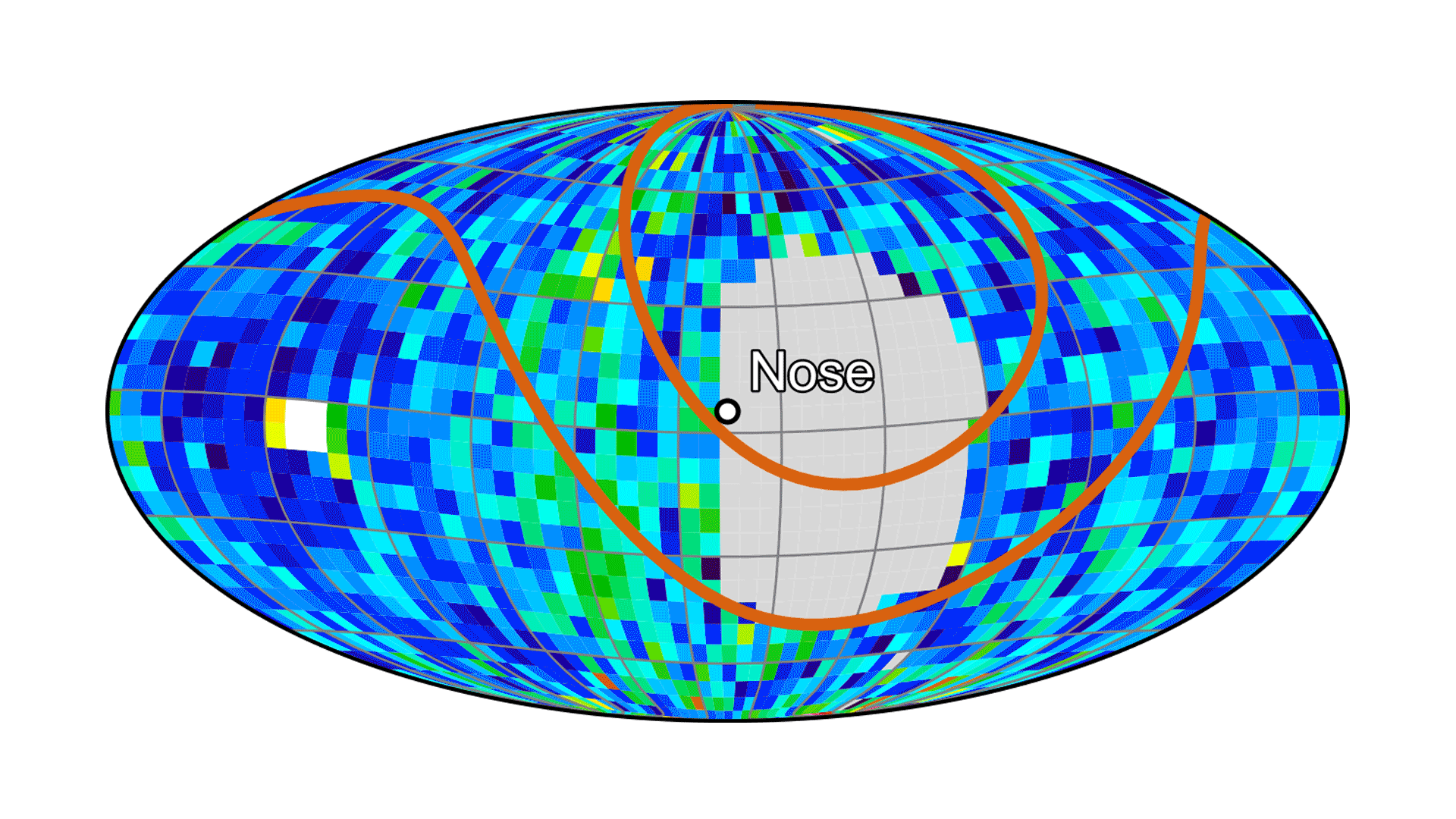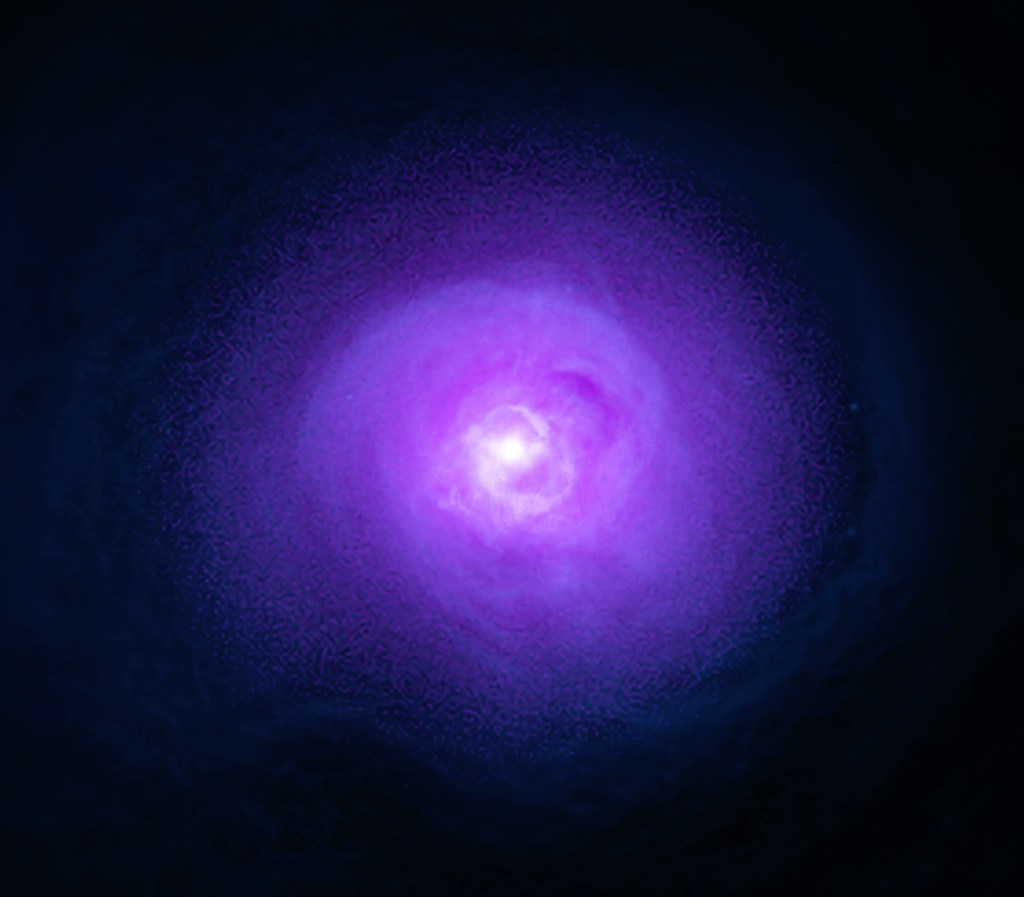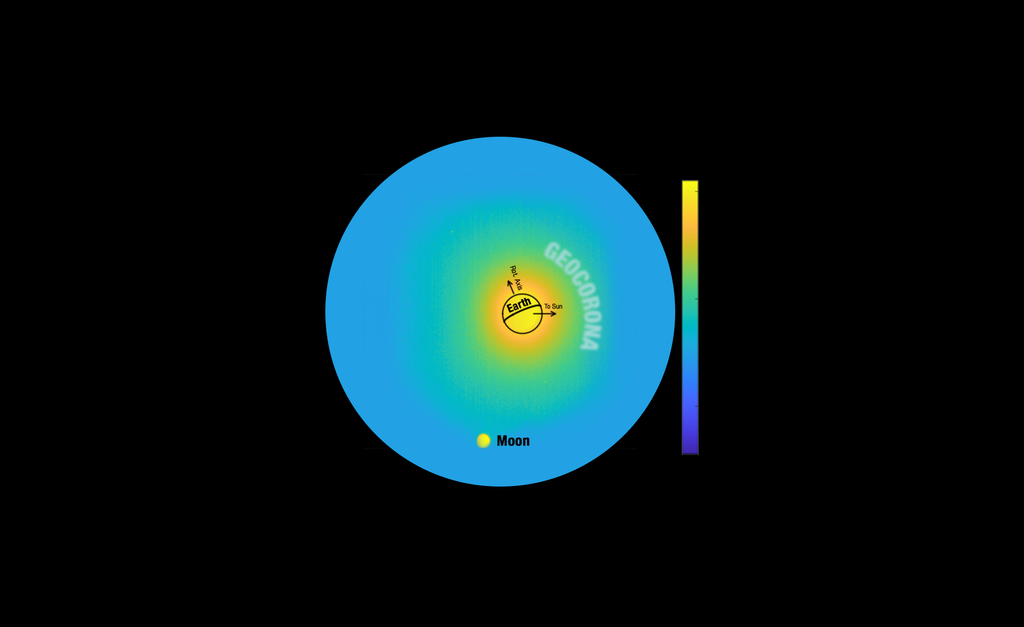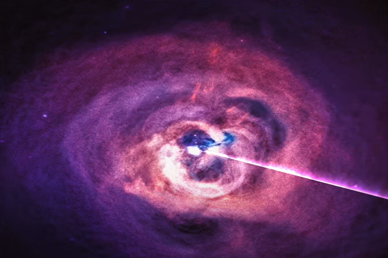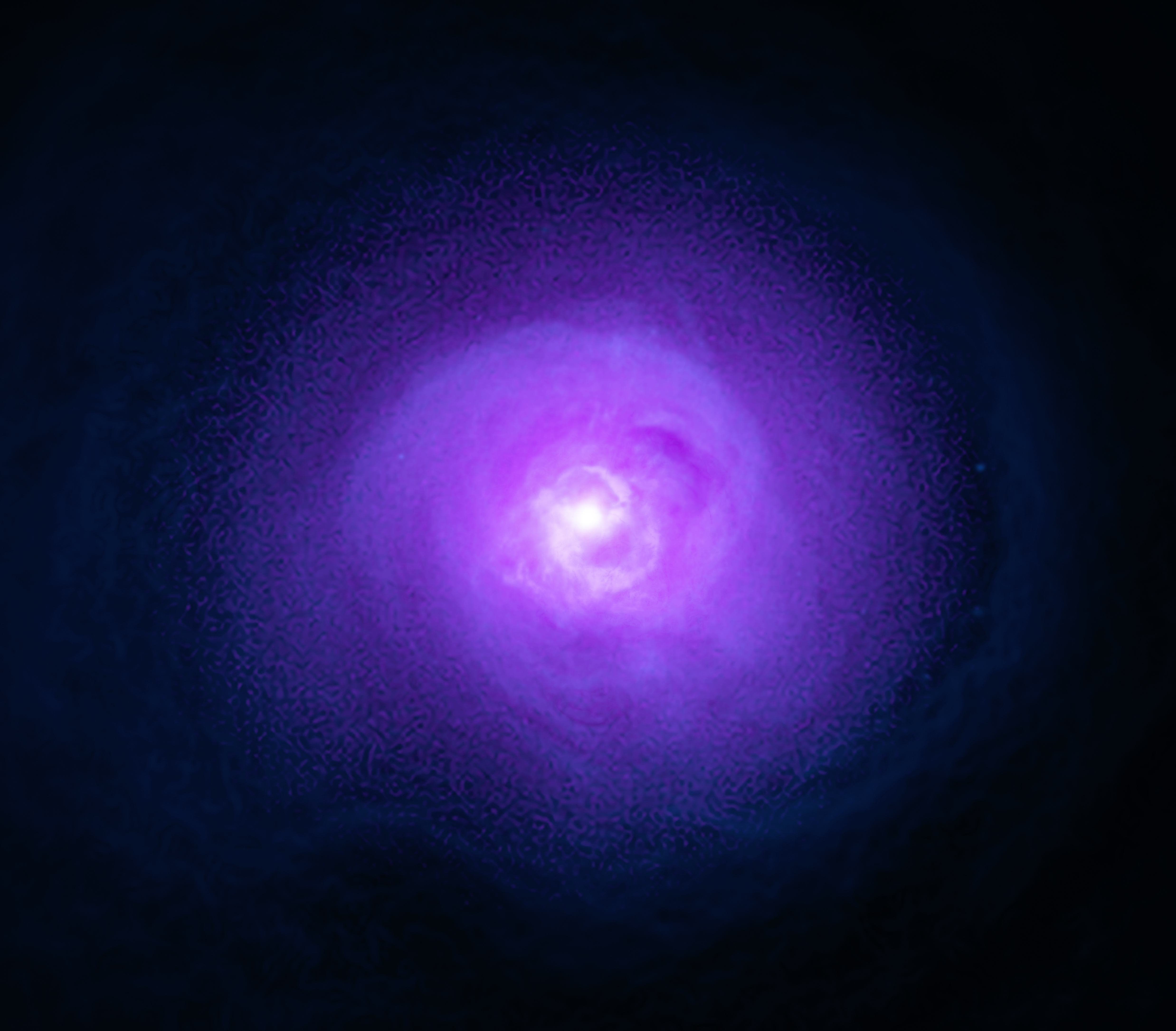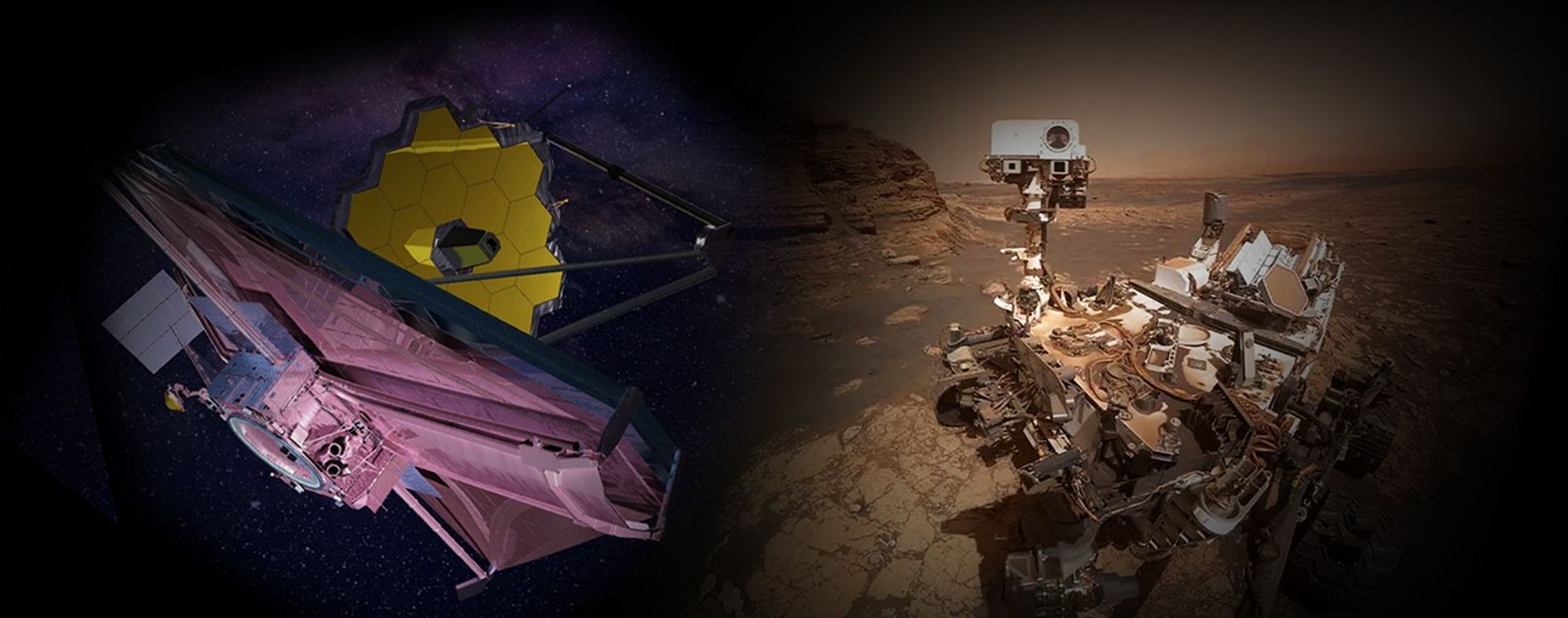Data Sonifications: Black Holes
During May 2022, NASA's Universe of Learning Accessible Learning Resources team and NASA’s Chandra X-ray Observatory released a pair of sonifications on black holes. The two black hole sonifications, one of M87 and the other of the Perseus Galaxy Cluster, were released on May 4, 2022 through a NASA media release, as well as the NASA SoundCloud. They have garnered over four million listens/views across NASA media accounts alone and have been shared across numerous media outlets, including two New York Times articles.
The M87 image in visual form contains three panels that are, from top to bottom, X-rays from Chandra, optical light from NASA's Hubble Space Telescope, and radio waves from the Atacama Large Millimeter Array in Chile. The sonification scans across the three-tiered image from left to right, with each wavelength mapped to a different range of audible tones. Radio waves are mapped to the lowest tones, optical data to medium tones, and X-rays detected by Chandra to the highest tones. The brightest part of the image corresponds to the loudest portion of the sonification, which is where astronomers find the 6.5-billion solar mass black hole that the Event Horizon Telescope (EHT) imaged and released in 2019.
The Perseus Cluster is the second sonification in the first set and went viral on Reddit, being featured on the site’s top 15 pages and having since been requested by the BBC and Netflix to be included in two documentaries about the Universe. Since 2003, the black hole at the center of the Perseus galaxy cluster has been associated with sound. This is because astronomers discovered that pressure waves sent out by the black hole caused ripples in the cluster's hot gas that could be translated into a note — a note that humans cannot hear, some 57 octaves below middle C. Now, this new sonification brings more notes to this black hole sound machine. This sonification is unlike any other before it, because it revisits the actual sound waves discovered in data from NASA's Chandra X-ray Observatory. The popular misconception that there is no sound in space originates from the fact that most of space is essentially a vacuum, providing no medium through which sound waves can propagate. A galaxy cluster, on the other hand, has copious amounts of gas that envelop the hundreds or even thousands of galaxies within it, providing a medium for the sound waves to travel. In this sonification of Perseus, the sound waves that astronomers previously identified were extracted and made audible for the first time. The sound waves were extracted in radial directions -- that is, outward from the center. The signals were then resynthesized into the range of human hearing by scaling them upward by 57-58 octaves above their true pitch. They are thus being heard 144 quadrillion and 288 quadrillion times higher than their original frequency.
The NASA Universe of Learning's Accessible Learning Resources team (https://www.universe-of-learning.org/resources/projects/accessible-learning-resources) creates each sonification using universal design, creating and testing them with users who are blind or low vision. Techniques are used to portray the scientific data in a way that makes the most sense for the specific science being included, keeping it accurately represented and telling the story, while also providing a new way of conveying meaning through sound to support the needs of underrepresented learners.
“When I heard my first sonification I had goosebumps,” Christine Malec says. “It was a visceral, sensory experience that I’d never had before with astronomy.”
Listen to the these sonifications and more: https://chandra.cfa.harvard.edu/sound/#m87jet; https://chandra.cfa.harvard.edu/sound/#perseus
Check out the article featuring these sonifications in the New York times: https://www.nytimes.com/2022/05/07/science/space/astronomy-black-hole-sound.html?unlocked_article_code=AAAAAAAAAAAAAAAACEIPuomT1JKd6J17Vw1cRCfTTMQmqxCdw_PIxftm3iWka3DIDm4diP8eAoWG8EqKfrJqbNZ01i-HXthHN7o-AfZ2x-RcekxqTwTtuZyZnphDIzkwrcj7eFIK6K_3fOJy9y72PC7-If1jxba7slWIPGjtUK3f12klLV5nvZdhfVi10XcIkbPPELQjiNB91P8jBs1qVHxXMnnxyvrtDR19Md-GawiNqVVlHrEEBkyA2IKU-LkCcw5NCF7ZTXMZ4Wk06t5UPN1_L7-oZld7O5K42eNNfzQueIS5BJQxRJzWkKFouNPOrh-NzcmxwZYmBaB_Vz45ZqlLsdrRmhYXkis∣=url-share
NASA's Universe of Learning project is supported by NASA under cooperative agreement award number NNX16AC65A and is part of NASA’s Science Activation Portfolio. Please visit https://science.nasa.gov/science-activation-team/universe-of-learning to learn more.












